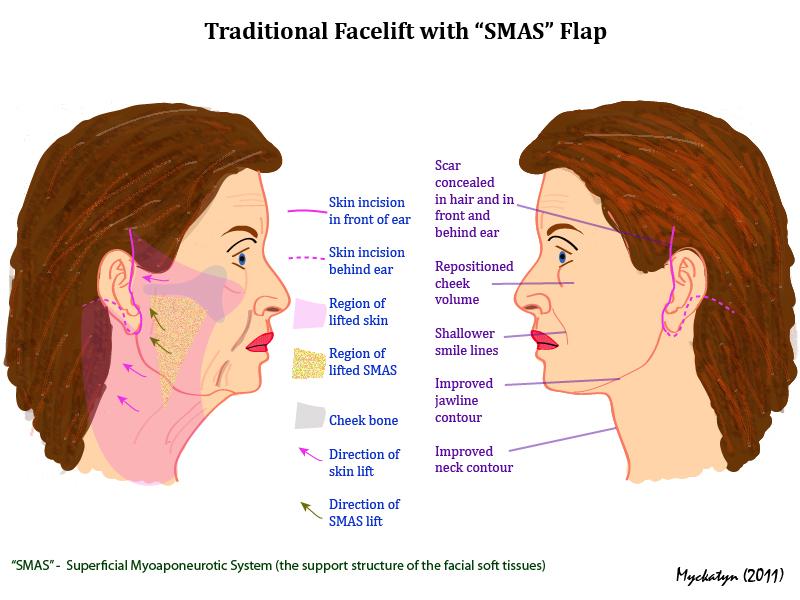Facelifts (FLTs)

Facelifts (FLTs): Definition and Characteristics
What is a Facelift?
Facelifts (FLTs), medically known as rhytidectomy, is a surgical procedure designed to reduce visible signs of aging in the face and neck. It works by tightening underlying facial muscles, removing excess skin, and repositioning tissues to restore a youthful and rejuvenated appearance.
Characteristics
Procedure
During a facelift, incisions are typically made around the hairline and ears to allow access to facial tissues. The surgeon lifts and tightens underlying muscles and skin, removing excess tissue to smooth wrinkles and sagging. There are variations including full, mini, and deep-plane facelifts, tailored based on individual anatomy and goals.
Benefits
A facelift provides long-lasting, natural-looking results by addressing sagging skin, deep wrinkles, jowls, and loss of facial contours. Effects can last 10 years or more, significantly longer than non-surgical treatments. It improves overall facial symmetry and can be combined with other procedures like eyelid surgery or neck lifts for comprehensive rejuvenation.
Risks
Risks include hematoma (collection of blood beneath the skin), scarring, nerve injury causing temporary or permanent weakness or numbness, hair loss near incisions, skin loss due to compromised blood supply, infection, and anesthesia complications. Factors increasing risk include smoking, certain medications (blood thinners), underlying medical conditions, and poor healing ability.
Recovery
Recovery times vary, typically requiring 10 to 14 days off work and 4 weeks before strenuous activities. Swelling and bruising are common and generally resolve within weeks. Adhering to postoperative instructions is critical for optimal healing and outcome.
Clinical Significance
Facelift surgery remains the most effective surgical intervention for facial aging, offering results unmatched by non-invasive procedures. However, the decision is highly personal and must consider the balance of risks, recovery, cost, and expected outcomes. Consultation with a skilled, board-certified plastic surgeon is essential for individualized assessment and safety.
Key Points
- Facelift (rhytidectomy) surgically lifts and tightens facial tissues to reduce aging signs.
- Provides long-lasting, natural improvements in facial contour and wrinkles.
- Risks include bleeding, nerve injury, scarring, and skin complications.
- Recovery involves several weeks with swelling and bruising common initially.
- Personalized surgical planning is vital for safety and satisfaction.
Consult with Our Team of Experts Now!
For expert surgical consultation, evaluation, and personalized facelift planning, consult with our board-certified plastic surgeons who combine artistry with technical excellence for optimal rejuvenation such as Cellular Therapy and Stem Cells.
References:
- Rohrich RJ, Pessa JE. A Systematic Review and Comparative Analysis of Reconstructive Rhytidectomy Techniques. Plast Reconstr Surg. 2024 Oct 6;154(4):757-769. doi:10.1097/PRS.0000000000009836. Available at: https://www.ncbi.nlm.nih.gov/pmc/articles/PMC11539935/
- American Society of Plastic Surgeons. Rhytidectomy (Facelift) Surgery. 2018 Dec 10. doi:10.1001/jama.2018.17716. Available at: https://jamanetwork.com/journals/jama/fullarticle/2718070
- Baker D, et al. Facelift Part II: Surgical Techniques and Complications. Aesthetic Surgery Journal. 2021 Oct;41(10):NP1276-NP1294. doi:10.1093/asj/sjab081. Available at: https://doi.org/10.1093/asj/sjab081
- Ramakrishnan V, et al. Rhytidectomy – StatPearls. 2025 Jul 7. Available at: https://www.ncbi.nlm.nih.gov/books/NBK564338/
- Gentile RD. Facelift (Rhytidectomy): Review of Evolving Techniques and Outcomes. Clinics in Plastic Surgery. 2019 Oct;46(4):443-456. doi:10.1016/j.cps.2019.06.002. Available at: https://doi.org/10.1016/j.cps.2019.06.002















